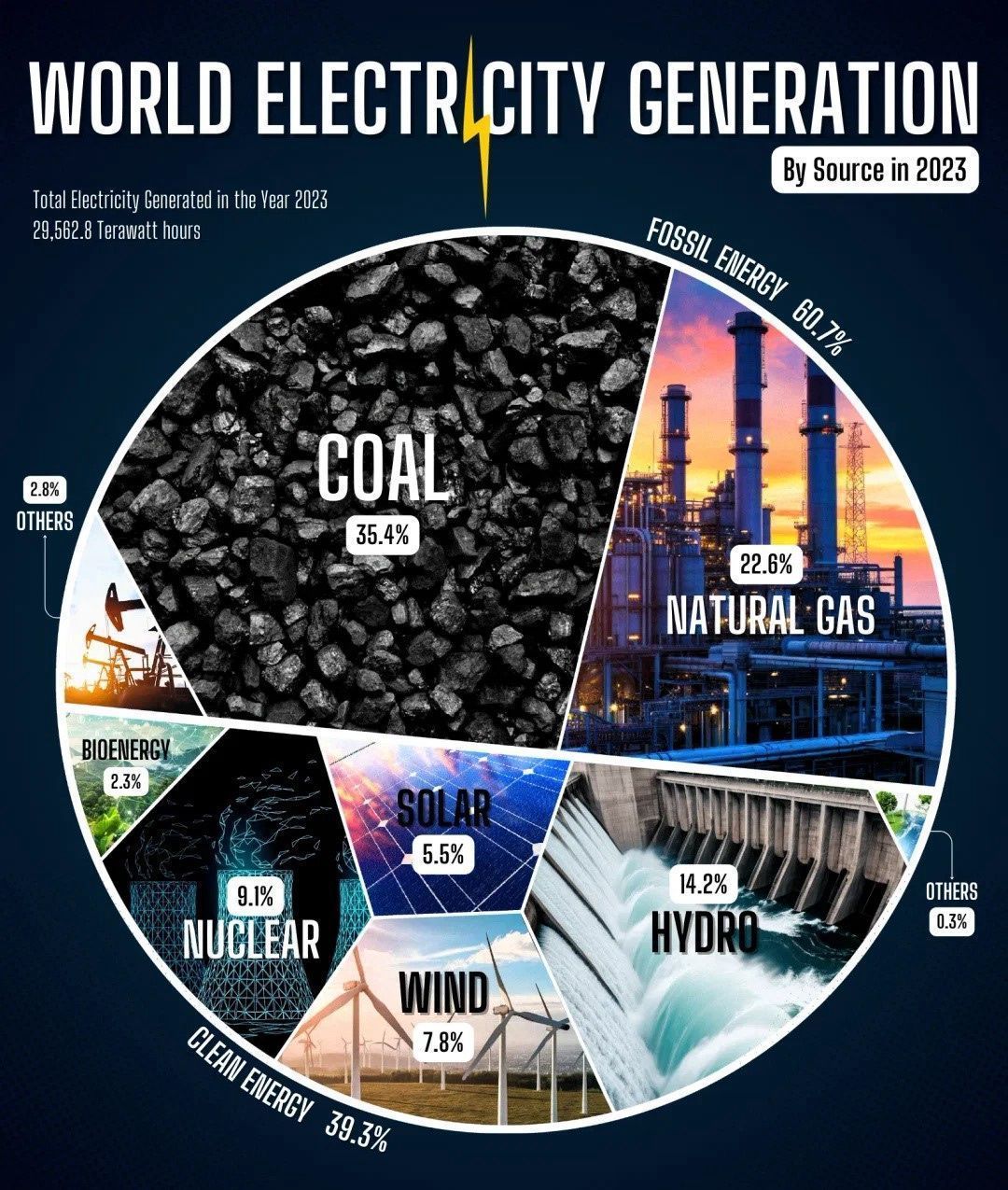Coal continues to lead the way in terms of electricity generated from it, but is gradually being replaced by wind and solar, which are rapidly increasing the rate of clean energy production.
Alessandro Blasi, Senior Advisor to the Executive Director of the International Energy Agency IEA, spoke about current trends in the global energy sector on LinkedIn.
He drew attention to the following trends in electricity generation in countries around the world:
1. Coal remains the “global king” in electricity generation. However, its dominance today is more concentrated in Asia, as coal-fired power plants are gradually phasing out their operations in many parts of the world.
2. Natural gas is an important source of electricity generation. Although its use is global, natural gas is used more for power generation in regions such as the United States, the Middle East and Russia, which have large reserves of this mineral.
3. A few decades ago, oil was the No. 1 source in the energy mix. Today, it is practically not used for electricity generation at the global level. Oil remains only in some cases in the Middle East to meet peak demand, but it is still gradually being replaced.
4. Nuclear power continues to play an important role in meeting electricity needs, but its share in the global energy mix has halved over the past 30 years.
5. The most traditional renewable energy is hydropower, which is still the most important source of renewable energy.
“It is often forgotten that hydropower is the No. 1 source of clean electricity globally,” the expert said.
6. Wind and solar power still account for a relatively small percentage of the global electricity generation structure, expressed in single digits. But their contribution is growing at an extraordinary rate, says Alessandro Blasi.
He also reminded that the demand for electricity is growing rapidly and is accelerating even more.
The expert provided an infographic illustrating the shares of different sources of electricity generation in the total volume.

Source: visualcapitalist.com.
According to the data, the total amount of electricity generated in 2023 amounted to 29562.8 TWh. The top three sources are as follows:
1. Coal – 35.4%.
2. Natural gas – 22.6%.
3. Hydroelectric power plants – 14.2%.
The share of each of the other sources is less than 10%.
According to the results of 2023, 60.7% of all electricity was generated by fossil fuels, while clean energy sources accounted for 39.3%.
Recently, EcoPolitic reported that renewables have caused a boom in the EU, and in 2024, global investment in clean energy exceeded $2 trillion for the first time.




